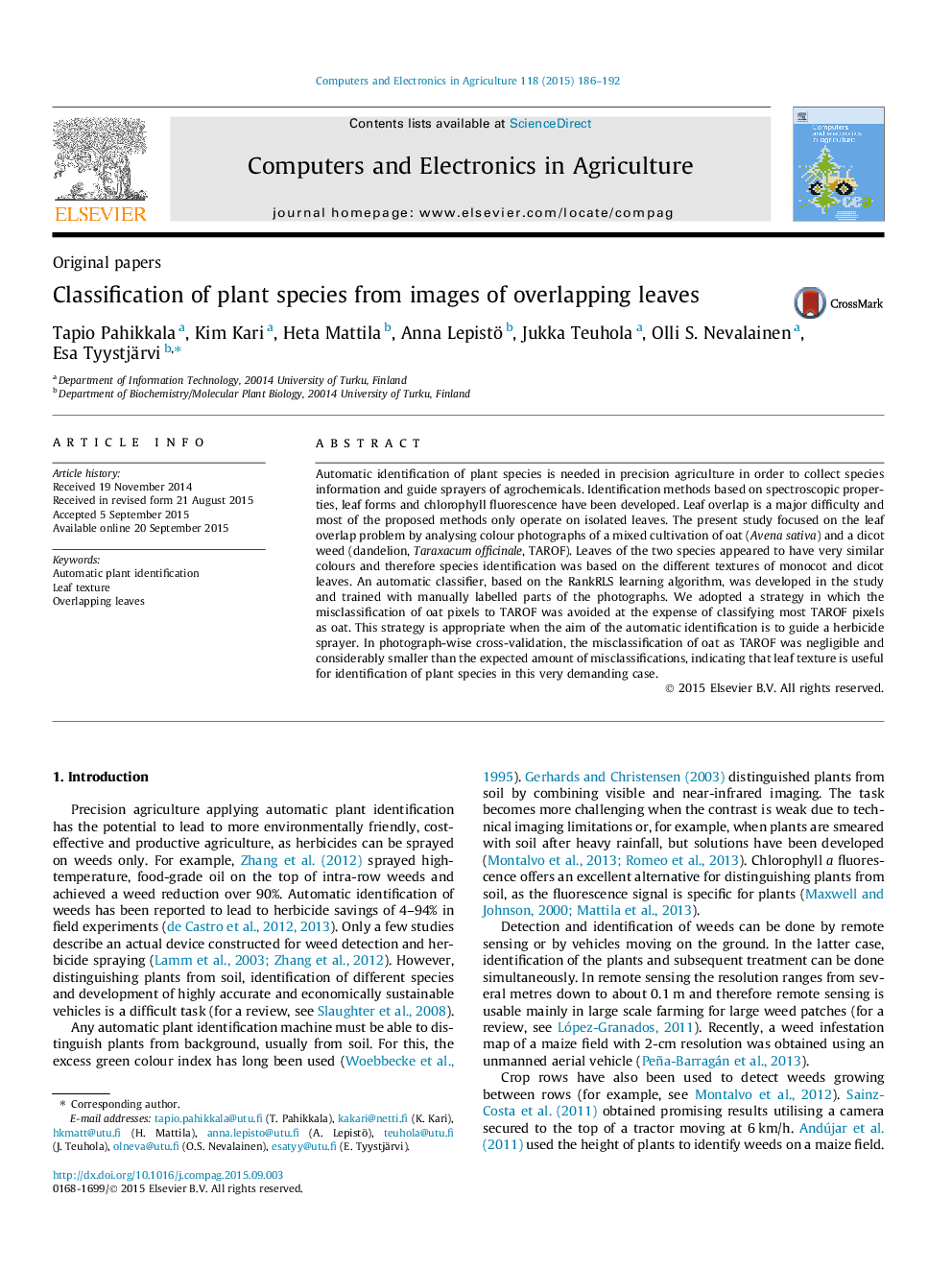| Article ID | Journal | Published Year | Pages | File Type |
|---|---|---|---|---|
| 84087 | Computers and Electronics in Agriculture | 2015 | 7 Pages |
•Overlapping leaves constitute a difficult problem for automatic plant identification.•Leaf surface texture can be used for identification of species.•Local binary patterns are suitable texture features for plant identification.•Modern, data driven classification algorithms work well with texture features.
Automatic identification of plant species is needed in precision agriculture in order to collect species information and guide sprayers of agrochemicals. Identification methods based on spectroscopic properties, leaf forms and chlorophyll fluorescence have been developed. Leaf overlap is a major difficulty and most of the proposed methods only operate on isolated leaves. The present study focused on the leaf overlap problem by analysing colour photographs of a mixed cultivation of oat (Avena sativa) and a dicot weed (dandelion, Taraxacum officinale, TAROF). Leaves of the two species appeared to have very similar colours and therefore species identification was based on the different textures of monocot and dicot leaves. An automatic classifier, based on the RankRLS learning algorithm, was developed in the study and trained with manually labelled parts of the photographs. We adopted a strategy in which the misclassification of oat pixels to TAROF was avoided at the expense of classifying most TAROF pixels as oat. This strategy is appropriate when the aim of the automatic identification is to guide a herbicide sprayer. In photograph-wise cross-validation, the misclassification of oat as TAROF was negligible and considerably smaller than the expected amount of misclassifications, indicating that leaf texture is useful for identification of plant species in this very demanding case.
